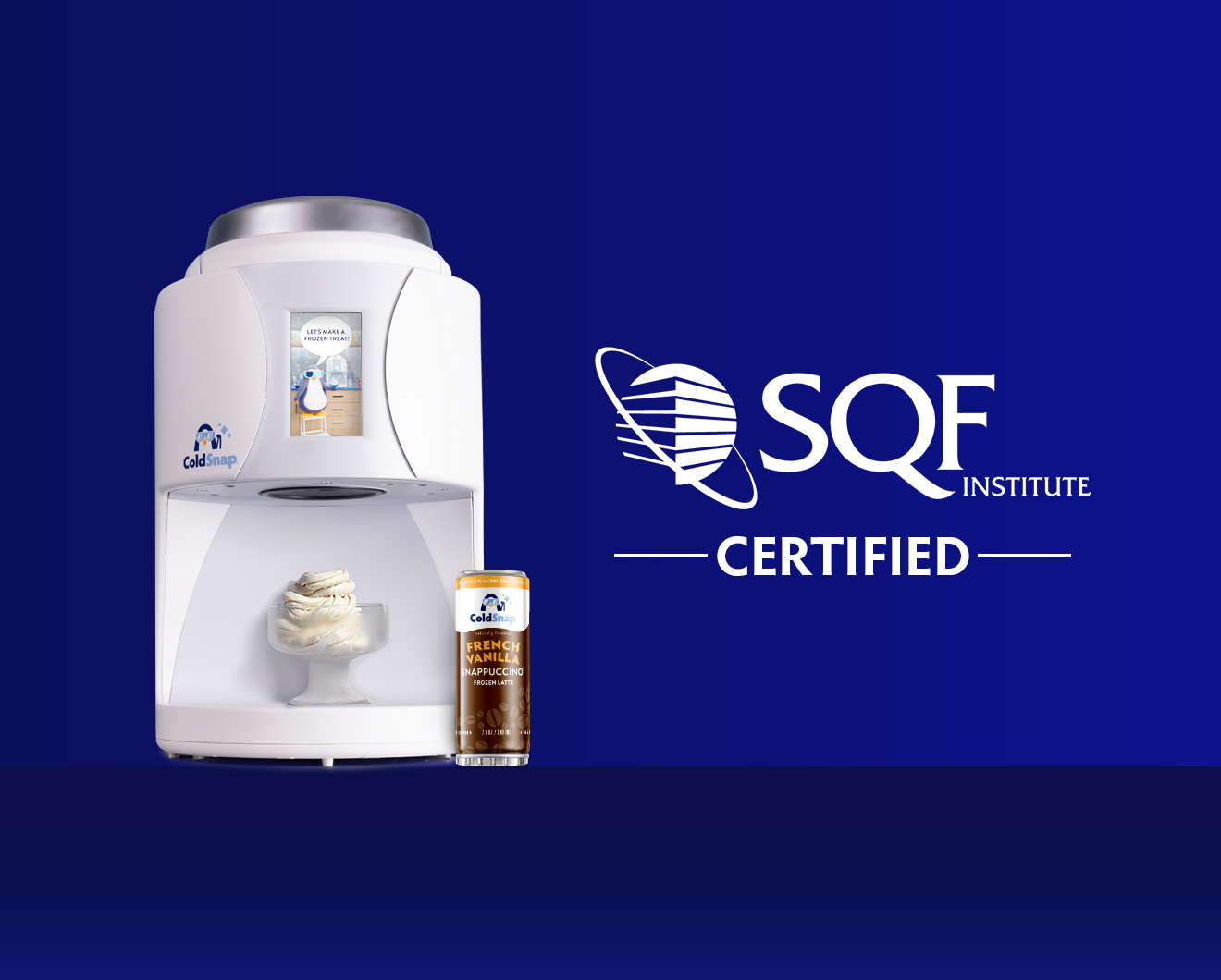ColdSnap HQ in Billerica, MA, has been brimming with excitement as our manufacturing buildout nears completion. The equipment needed to produce and package our delicious frozen treats at scale is now in place.
Alongside these upgrades, ColdSnap underwent a rigorous food safety quality audit. We are thrilled to report that ColdSnap is now SQF (Safe Quality Foods) Certified. SQF is considered the gold standard in food safety quality management systems, and we are delighted to offer our partners the security of a state-of-the-art production facility.
I sat down with ColdSnap’s Food Safety Quality Manager (and MVP of “dad jokes”), Jim O’Toole, to understand what it took for ColdSnap to gain our SQF Certification, and what the certification means for our partners.
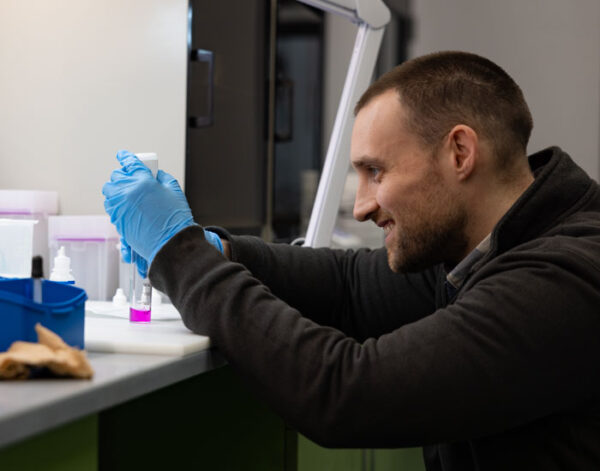
Jim O’Toole, Food Safety Quality Manager at ColdSnap, conducts a titration analysis to verify that ColdSnap’s cleaning process is functioning properly
How did ColdSnap prepare for the SQF audit?
O’Toole: Since SQF is a company-wide initiative, we first got buy-in from upper management. We then trained all departments. Next, we designed a safe quality food system and conducted even more training (to date we have 800+ trainings on record). We followed this system for three months and collected the corresponding data.
Next, we conducted an internal audit to ensure we were in compliance with SQF code. After this we hired a consultant to conduct what is called a “gap assessment.” This assessment verified that our policies, programs, and facilities are up to SQF standards and alerted us to any deficiencies that needed work. After these steps were complete, we were ready for the formal SQF audit.
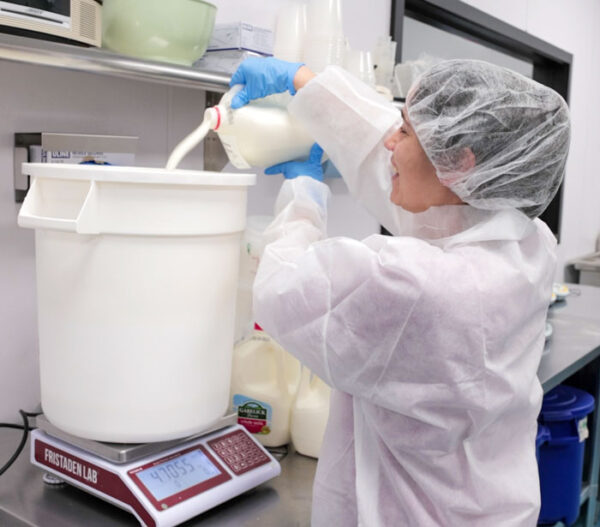
Laura Jacobs, ColdSnap Lead Food Scientist, pours milk for ColdSnap’s ice cream mix
What happened during the SQF audit?
O’Toole: The audit, conducted by a food safety quality expert, took two full days. About half of the time was spent on the production floor, observing ColdSnap’s facilities and processes, and the other half was spent in the office.
During the office portion, we reviewed our system’s supporting documentation including the data collected during the three prior months. The auditor went through the SQF code line by line, requesting supporting documentation which showed that we were addressing each part of the code in a way that ensured high quality and no food safety risks.
The audit ended with a closing meeting where the auditor went over our findings and our tentative score. The process wasn’t done there, however. The auditor then submitted these findings to a technical reviewer at the certifying body, who could either agree or request the findings be amended. The certifying body then provided us with our findings and gave us thirty days to make any necessary changes. Once we submitted those changes, we finally were approved as an SQF certified facility.
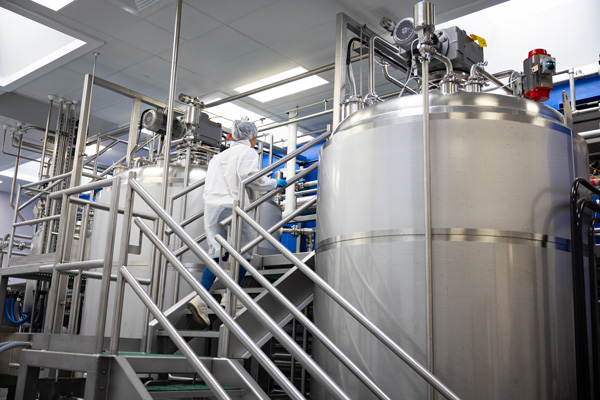
Jacobs inspecting ice cream mixing and holding tanks
What does our SQF Certification mean for our partners?
O’Toole: When you work with a partner that is SQF certified, you can feel confident that this partner has all the programs in place to produce food that meets the top food safety quality scheme based on what is currently known in the industry.
Recently, SQF has placed more emphasis on a “food safety quality culture” where food safety and quality are a top bullet point in each employee’s job description. When you work with a company that is SQF certified you can know that there is a company-wide commitment to food safety and quality.
You can also feel confident that an SQF site has gone through a top-notch auditing program. Each SQF site has had an independent, third-party auditor go through their facility and their food safety quality management system. That auditor has a technical reviewer and certifying body who goes over their findings before issuing a certificate. That auditor will get audited themselves. Lastly, that certifying body is audited by an organization called the Global Food Safety Initiative (GFSI).
You can be assured that an SQF site has risk-based programs that focus on preventing problems, not addressing emergencies.
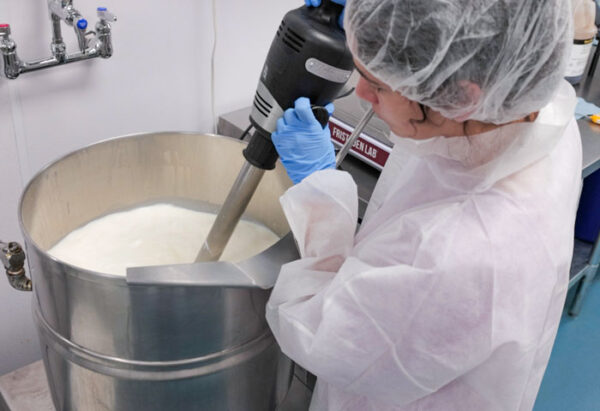
Jacobs blends liquid ice cream mix
What are you currently working on at ColdSnap?
O’Toole: Now that the framework for our food safety quality system is set, we can turn some of our attention towards continuous improvement.
Coldsnap invested in an internal lab so that we can conduct testing ourselves. Right now, we are beefing up our testing capabilities to help ensure that both a) our raw materials and b) our environment is always contributing to a high-quality product.
We also just completed an onsite FDA audit. FDA is another organization that oversees us (and most companies that make food that does not fall under the USDA) and helps ensure that the food we produce is safe and complies with all federal regulations.
From a food safety and quality perspective, ColdSnap’s on demand ice cream maker (that also creates a variety of other frozen treats) is pure delight:
- The ColdSnap machine needs no cleaning. Product is contained in the ColdSnap pod during freezing, mixing, and dispensing and never touches the machine.
- ColdSnap’s shelf stable pods are filled with simple, high quality liquid ingredients like milk and cream, and contain no artificial flavors or colors.
- The ColdSnap production facility is SQF Certified – the industry gold standard in food safety quality management.
By Lyn Ferreira
Photos by Tim Gallagher
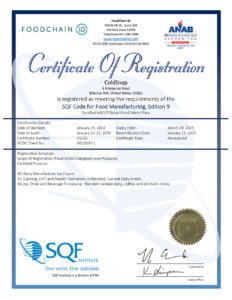
Get the Scoop
Stay in the loop on all things ColdSnap with our newsletter.

